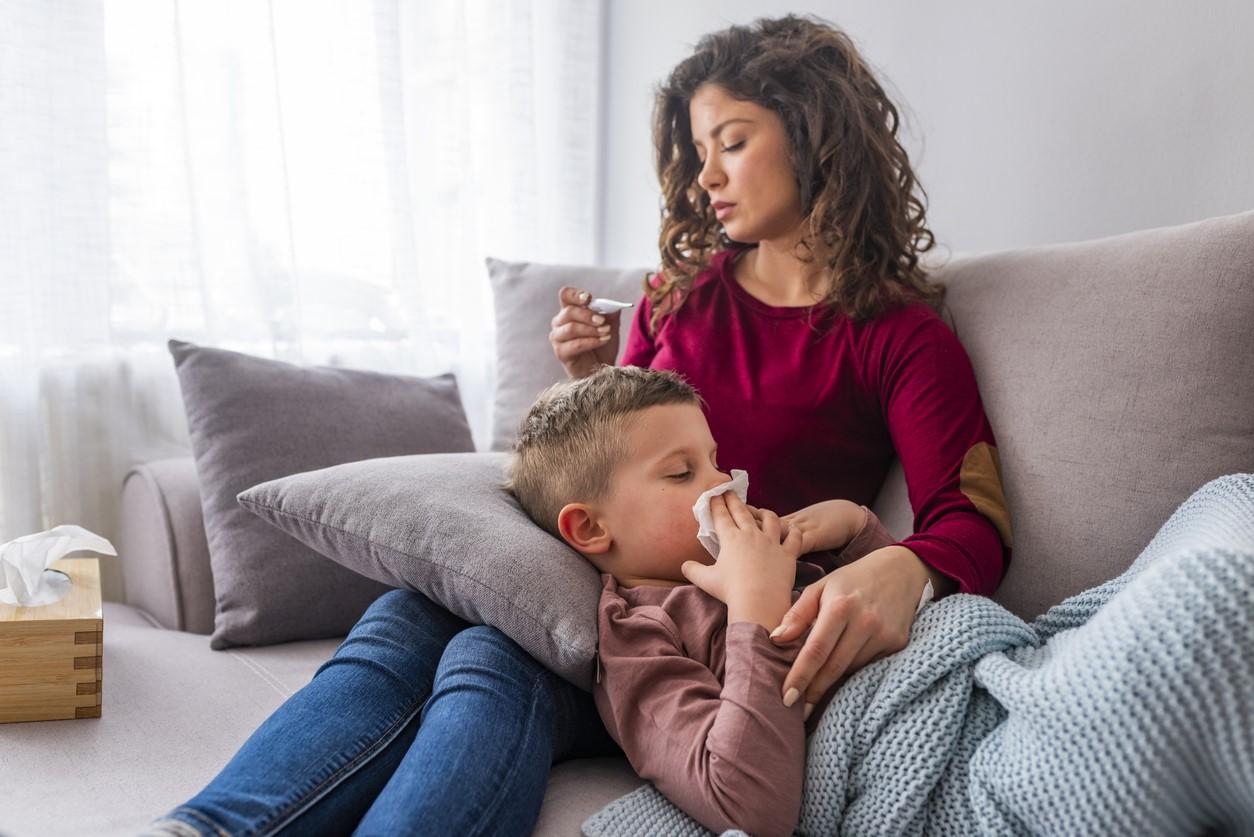A new analysis of data from a randomized trial provides more evidence in support of shorter antibiotic courses for young children with non-severe community-acquired pneumonia (CAP).
The study, published last week in mBio, analyzed throat swabs from children enrolled in the SCOUT-CAP (Short-Course Outpatient Therapy of Community Acquired Pneumonia) trial, a randomized clinical trial that found that a 5-day course of antibiotics for kids with non-severe CAP was superior to 10 days—the currently recommended duration for pediatric CAP. While the initial trial results showed the 5-day treatment achieved a similar clinical response as 10 days, the throat swab analysis also found fewer antibiotic resistance genes in children who received the shorter treatment.
It's a novel finding that's significant because it boosts the case that "shorter is better" when it comes to antibiotic duration for pediatric CAP, which has been a priority area for child health research and has important implications for antibiotic stewardship, the study authors say.
"The idea that shorter courses of antibiotics would have less negative impact on the microbiota and less selection for resistance makes sense, but it had never to our knowledge been empirically tested, and randomized trials are the best way to do that," lead study author Melinda Pettigrew, PhD, an epidemiologist and deputy dean with the Yale School of Public Health, told CIDRAP News.
"We have to think of these off-target effects when we think about antibiotic treatments and their impact on resistance."
Fewer resistance genes in 5-day treatment group
In the SCOUT-CAP trial, which was supported by the National Institutes of Allergy and Infectious Diseases, 381 children ages 6 to 71 months with non-severe CAP were randomized 1:1 to receive 5 days or 10 days of oral beta-lactam antibiotics, mainly amoxicillin. The trial results, published in JAMA Pediatrics in January, showed that the shortened approach resulted in similar clinical response and antibiotic-associated adverse effects, while reducing antibiotic exposure (see CIDRAP News story).
In this sub-study of data from the trial, Pettigrew and colleagues from the Antibiotic Resistance Leadership Group used shotgun metagenomic sequencing of DNA from throat swabs and stool samples collected from 171 of the enrolled children to provide more detail on differences in the resistomes and microbiota in the children who received the 5- and 10-day treatments.
While the main aim of the trial was to determine if less than 10 days of antibiotics can work well for kids with non-severe CAP in terms of clinical outcomes, the researchers also wanted to look at how the microbiome—the genome of all the microorganisms living in the body—might be affected by different durations of antibiotic use.
"We decided at the time that it would be important to add a microbiome component to the trial, and that these data would either provide additional support for the idea of shortening duration, or we might learn the duration didn't matter," Pettigrew said.
The sequencing revealed that, at the end of the study (19 and 25 days after the first dose of antibiotics in the two groups), the median abundance of beta-lactam resistance genes per prokaryotic cell (RGPC) was significantly lower in the children who received the shorter course of antibiotics than in those who received the standard course (0.55 vs 0.60). That was expected, because the children were being treated with beta-lactam antibiotics.
But Pettigrew and her colleagues also found that the median abundance of multidrug efflux pump resistance genes was lower in the 5-day treatment group (0.15 vs 0.23). This suggests that some of the bacteria affected by the beta-lactam antibiotics may have contained resistance genes to multiple antibiotics. That selective pressure for resistance genes to other antibiotics is an example of the off-target effects that antibiotics can have, Pettigrew explains.
"It's important to remember that you can select for multiple resistance traits if they are genetically linked. This means you can select for resistance to antibiotics that aren't necessarily the antibiotic that you're using to treat an infection," she said.
Selecting for resistance can affect both the individual, who then may be more susceptible to future infection with resistant bacteria, as well as the community, Pettigrew added.
A temporal analysis, which compared resistance gene abundance at enrollment and the end of the study, showed that the children who received the standard course of antibiotics had a higher abundance of resistance genes for a longer period than the children who received shorter durations of therapy.
The analysis also found differences in the composition of the respiratory microbiome of the two treatments groups, with children in the standard-course group having a higher relative abundance of Neisseria subflava. While the implications of this finding are unclear, Pettigrew noted that N subflava can serve as a reservoir for resistance determinants and virulence genes for more pathogenic species.
What's also unclear is how long the disruption to the microbiome caused by antibiotic exposure lasts. Although it won't be possible with the SCOUT-CAP trial because of the trial design, Pettigrew said she would ultimately like to examine the long-term impacts of antibiotic use in future studies.
Boosting the case for fewer antibiotics
The findings are important from a stewardship perspective, because more than 930,000 antibiotic prescriptions are written for children with pneumonia each year.
The 2011 Infectious Diseases Society of America guidelines for pediatric CAP, which are currently under review, recommend 10-day treatment courses, while noting that shorter courses may be just as effective, particularly in mild cases. If future IDSA guidelines recommend 5 days of antibiotics for non-severe cases, that could reduce antibiotic exposure by roughly 5 million days in US children.
Pneumonia is just one of many common bacterial infections for which scientists and clinicians are assessing the clinical efficacy of shorter antibiotic treatments in randomized trials. The hope is that shorter antibiotic durations can achieve similar clinical outcomes while also cutting overall antibiotic exposure, reducing selection pressure for resistant organisms, and lessening the risk for adverse effects.
Pettigrew believes incorporating this kind of microbiome analysis into such trials could help bolster the case for shorter treatments by providing a clearer picture of the true safety profile of antibiotics.
"We know that the microbiome is important for health, and disruptions to the microbiome are an important part of the equation," she said. "So if two treatments have similar clinical outcomes, and one is less likely to negatively impact the microbiome and resistome, then that's the one I would want to use."























